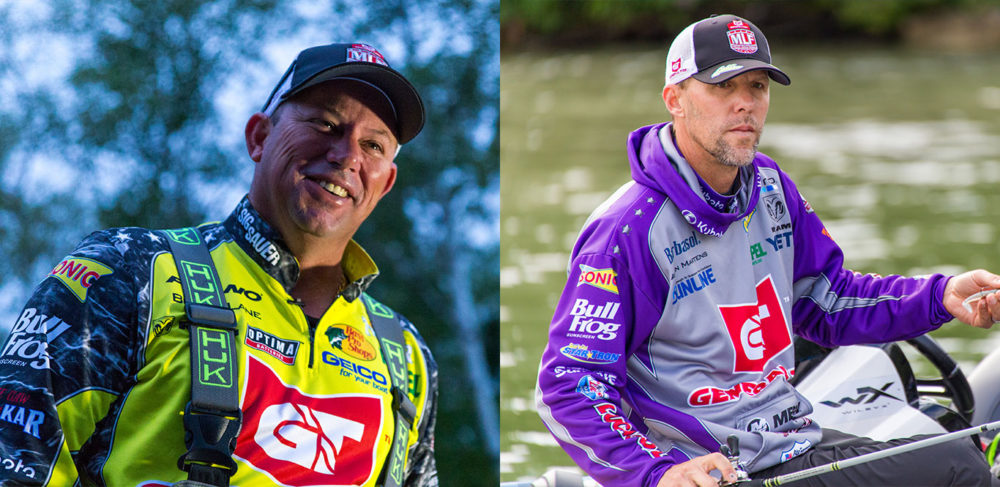Lane, Martens on their Braid-to-Fluoro Connection: The FG Knot

ALPENA, MI – Their boats are parked side-by-side in the boatyard in Alpena, Michigan as defending General Tire World Champion Bobby Lane and three-time Bassmaster Elite Series Angler of the Year Aaron Martens prep their tackle for the following morning’s Wiley X Summit Cup Championship Round. As one might imagine, the conversation has wandered all over the road and back.
Lane prefers a larger hollow-bodied frog, Martens prefers his to be more compact. Lane would rather golf for exercise, Martens prefers to run 40 miles a week. But when the discussion comes around to tying braided line to a fluorocarbon leader, the two are in total agreement: the FG knot is the only way to go.
“What do you use to tie your braid to flouro, a Double Uni or a Surgeon’s?” Lane asks a photographer lurking nearby. “You should be tying the FG Knot, it’s the best one out there.”
Martens concurs: “I just started tying the FG Knot this past year,” he says. “I used to tie an Alberto, which is a really good knot, but the FG Knot is such a drastic improvement as far as both knot strength and the size of the knot. It really makes a difference.”
The FG Knot comes from the saltwater world (popular rumor traces its origins to Australia), and was developed as a means for the braid-to-fluoro connection to pass smoothly through the smaller eyelets of rods used for light jigging. It’s significantly smaller in profile than almost all other similar wind-on connector knots, and has tested in the low 80th percentage for breaking strength (the Double Uni and Surgeon’s tested in the mid to low 50th percentages).
The FG is slightly more complicated to tie than other connectors, but the payoff is worth the effort, according to Lane.
“You can barely even tell there’s a knot when you tie it properly,” he points out as he shows off the knot he’s just tied to on a drop-shot rod. “It takes a little time to learn how to tie it right consistently, but it’s worth the effort.”